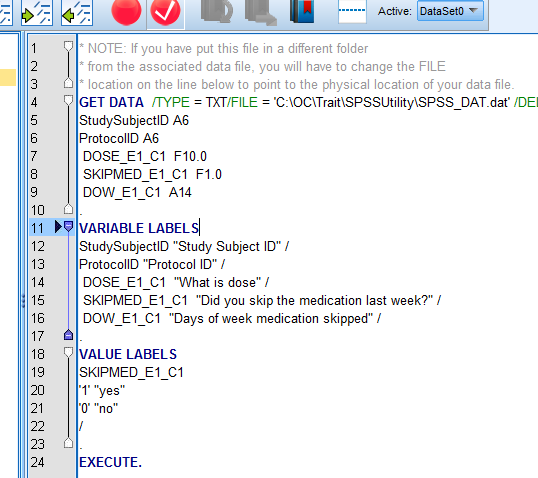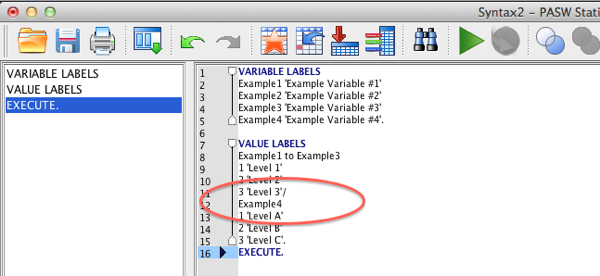
Inferential analysis goes further to study how variables in a data set relate with each other and forecasting outcome.

These tables and charts summarize data and scale variables. These statistical measures are presented in the form of frequency tables, pie charts, histograms and boxplots. The most common descriptive statistical methods include measure of central tendency and measure of dispersion. Descriptive analysis seeks to study frequency and features exhibited by the data. There are two types of analysis namely descriptive and inferential analysis. This will be followed by data analysis depending on what you wish to achieve.Ĭode and Enter Data in SPSS To Begin Statistical Analysis Once you are done with coding data, you can enter data values in the data view screen. Interval and ratio levels of measurement are grouped as scale measures. The three measure properties include scale, ordinal and nominal. Measure: This property indicates level of measurement of data source.SPSS would treat these figures as missing and ignore the values. Like by assigning 9,99 and 999 as discrete missing vales. You need to assign figures to be missing values. Missing: This entry in the variable view signals to the program that data is missing.On clicking the tag it switched between numeric values and their labels. This can be seen in the data view by clicking the toe tag icon. For example when coding gender in SPSS you can let 1 represent male and 2 represent female. Values: In case of categorical data, you need to specify which numbers represent which category.You can enter a maximum of 255 characters containing spaces and punctuation marks.


#Spss code to label new variable how to
Before running analysis using SPSS a user need learn how to code and enter data in SPSS system

This is unlike other packages like R and SaS that are command oriented and require users to be conversant with statistical equations modeling. It has a graphical user interface that makes it friendly to users with little programming language. SPSS stands for Statistical Package for Social Scientists the package is mostly used by non-statisticians due to its simplicity. The selection of a package depends on familiarity and simplicity of a program to the user. Normally statisticians use SPSS, SaS, STATA, S-Plus, R GUI and MS EXCEL to conduct statistical and mathematical analysis. Statistical methods such as descriptive statistics and inferential statistics aid a researcher understand data patterns. Analysis can only be done after you code and enter data in SPSS. Data analysis involves running raw data in a statistical program to obtain results.


 0 kommentar(er)
0 kommentar(er)
